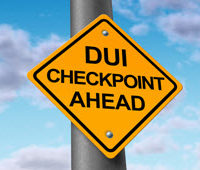Countering The Field Sobriety Tests In A Florida DUI

Like most other states, Florida has a per se driving under the influence law. Defendants who agree to provide chemical samples of breath or blood and have BACs above .08 are guilty almost as a matter of law. But in about 40 percent of these cases, Florida defendants refuse to provide such a sample.
In Florida, such refusals often involve substantial civil and criminal penalties. But there’s another part of the equation. In refusal cases, prosecutors must rely on circumstantial evidence from the three approved DUI field tests. Like all other circumstantial evidence, the field test results are subject to interpretation, and the jury’s interpretation is the only one that counts.
The Horizontal Gaze Nystagmus Test in Port St. Lucie
Doctors and athletic trainers often perform the “follow my finger” test with their head injury patients to help determine the extent of their injuries. That’s because nystagmus is a neurological condition that makes people unable to track moving objects with their eyes without involuntarily moving their pupils. In addition to head injury, neurological birth defect, some inner ear problems, alcohol intoxication, and many other issues cause nystagmus.
If conducted under controlled conditions, the HGN test accurately predicts intoxication in about 80 percent of cases. Common issues with this test include:
- Failure to eliminate all other non-alcohol causes,
- Performing the test in the dark a few feet away from bright flashing lights, and
- The test administrator’s questionable credentials.
In most cases, the test administrators are patrol officers who learned almost everything they know about HGN at brief, police-sponsored seminars.
Debunking the Walk and Turn Test in Florida
The “walking a straight line” test is a divided attention test which simultaneously measures both mental and physical abilities. Alcohol impairs both, so it is very difficult for intoxicated people to multitask in this way.
This test is often stacked against defendants who really never have a chance to complete it. Consider the following:
- Many defendants must walk imaginary lines in the dark instead of actual lines in well-lit rooms,
- The surface on many road shoulders and other outdoor areas is uneven, and
- The same flashing lights that disrupt the HGN test may also significantly impede a person’s ability to walk heel-to-toe in the dark.
Walking is actually a rather delicate operation. If one step is even slightly off, most people almost completely lose their balance. Overeager police officers almost always attribute such flaws to intoxication rather than the poor test conditions.
Questioning the One Leg Stand Test in Port St. Lucie
The OLS and WAT tests are very similar, in that both are divided attention tests whose conditions often determine their outcomes.
The OLS is a little different, however, because the instructions are sometimes extremely vague. Depending on the department, officers may instruct defendants to elevate their legs “until I say stop.” After four or five seconds, most people’s legs begin to tire, especially if they are obese or not in top physical condition. Typically, the test is only about half over at this point, so almost everyone wobbles a little whether they are intoxicated or not.
Contact Assertive Lawyers
The field sobriety tests are often very inaccurate. For a free consultation with an experienced criminal defense attorney in Port St. Lucie, contact Eighmie Law Firm, P.A. Convenient payment plans are available.
Resource:
news-journalonline.com/article/LK/20151227/News/605069639/DN/


